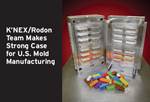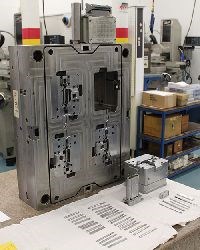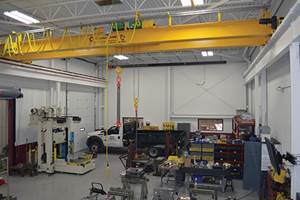Maximizing the Manufacturing Process with an Injection Press
Minimize the overall costs of your customer’s project with the addition of a press.
Mold manufacturers and molders alike should always continue to assess—and invest in—the latest technology. Not only can the effective use of automation and robotics result in lower long-term production costs, but moldmakers who offer molding capabilities can provide sample/tryout services and perhaps even evolve into single-source providers, enabling earlier project involvement and control of the manufacturing process.
Here at The Rodon Group, we recently added six of the latest Nissei servo-driven hydraulic machines. These energy-efficient machines provide the combined advantages of both hydraulic and electric injection systems; and are designed to deliver better performance for both thin- and thick-walled applications.
With this in mind, here are some injection press basics that will give you a better understanding of the presses, processes and pitfalls in the molding industry. To determine the size of the machine needed to get the best results, a project designer or engineer can get a good estimate based on some basic information. By knowing approximately what size machine will be required, you can better source a plastic injection molder to source the work to or you can purchase a machine for your shop.
Plastic Injection Molding Press Classifications
A general molding equipment list may look something like this:
• 3-68 ton injection molding presses
• 5-123 ton injection molding presses
• 5-154 ton injection molding presses
• 5-202 ton injection molding presses
• 5-233 ton injection molding presses
• 4-400 ton injection molding presses
So, what does this mean? Plastic injection molding presses are classified or rated based on tonnage, or more specifically the clamping pressure or force. Presses can run in size from less than 5 tons of clamping pressure to over 4000. The higher the press ton rating, the larger the machine.
A machine rated for 68 tons can deliver 68 tons of clamping pressure. This pressure keeps the mold closed during the injection process. Too much or too little pressure can cause quality issues. Too much or too little pressure can also cause flashing, where excess material appears on the part edge. Pressure also impacts the viscosity of the plastic being used in the project. Melt Flow Index or MFI is a measure of the ease of flow of the melt of a thermoplastic polymer. Plastic compounds react differently to pressure based on their MFI. The higher the MFI, the higher the pressure needed.
Clamping Force/Pressure Requirements
There are many factors that are taken into consideration when determining the size of the press. The size of the part, the polymer being used and something called the safety factor. The safety factor is an additional numerical percentage buffer that is added to the calculation to help avoid defects in the final part. Some recommend adding 10 percent to allow for the safety factor. As mentioned earlier, the MFI (Melt Flow Index) of the plastic compound will also impact the pressure needed to produce the part. Many calculations include the platen size as well as the mold and part size; however, to get an estimate of the press size your project will need, we have simplified it even further.
Many plastic injection professionals use a general rule of thumb of 2.5 times the surface square inches of the part to be produced. So, if you have a part with 42 square inches than you would need a press size with 105 tons of pressure. If you add 10 percent for a safety factor, you will need to use a press with a minimum of 115 tons of clamping force. A press size of 120 tons would be able to accommodate your plastic injection molded product.
A Lasting Investment
Once you have an estimate of the press size you will need, you can contact injection press manufacturers and/or distributors who can guide you through a purchase. Larger presses can accommodate larger molds and multi-cavity molds—often reducing the cost per part. However, larger molds are more expensive. Choosing the right press size can balance the upfront tooling expenditures with long-term manufacturing costs.
For More Information
The Rodon Group / (215) 822-5544
phynes@rodongroup.com / rodongroup.com
Related Content
OEE Monitoring System Addresses Root Cause of Machine Downtime
Unique sensor and patent-pending algorithm of the Amper machine analytics system measures current draw to quickly and inexpensively inform manufacturers which machines are down and why.
Read MoreSteps for Determining Better Mold Prices
Improving your mold pricing requires a deeper understanding of your business.
Read MoreThe Trifecta of Competitive Toolmaking
Process, technology and people form the foundations of the business philosophy in place at Eifel Mold & Engineering.
Read MoreHow to Improve Your Current Efficiency Rate
An alternative approach to taking on more EDM-intensive work when technology and personnel investment is not an option.
Read MoreRead Next
K’NEX/Rodon Team Makes Strong Case for U.S. Manufacturing
Rodon takes a solid relationship with toy giant K’NEX and applies its business model to other manufacturers—taking domestic manufacturing to the next level.
Read MoreHow to Use Strategic Planning Tools, Data to Manage the Human Side of Business
Q&A with Marion Wells, MMT EAB member and founder of Human Asset Management.
Read MoreReasons to Use Fiber Lasers for Mold Cleaning
Fiber lasers offer a simplicity, speed, control and portability, minimizing mold cleaning risks.
Read More




















